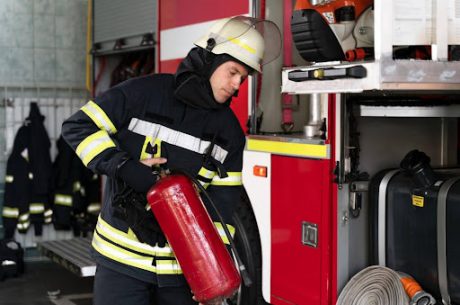Smoke and fire alarms play a crucial role in safeguarding Michigan homes and businesses from the devastating impact of fires. Properly functioning alarms can provide early detection and warning in case of fire, allowing occupants to react quickly, minimize loss, and save lives. In this blog post, we will explore essential guidelines for maintaining smoke and fire alarms in Michigan properties to ensure the continued safety and security of the people who live and work in them.
As a responsible homeowner or business owner, it’s vital to be aware of the importance of regular inspection, testing, and maintenance of your property’s smoke and fire alarms. Furthermore, understanding the unique challenges posed by Michigan’s variable climate can help you make informed decisions about the types and placement of alarms suitable for your property.
By following best practices for alarm maintenance, you can ensure that these life-saving devices remain in good working order and provide effective early warning in case of a fire.
Understanding Smoke and Fire Alarm Types
Selecting the appropriate smoke and fire alarm types for your Michigan property is a critical first step in ensuring early fire detection. There are two primary types of alarms, and understanding their differences can help you make an informed decision:
1. Ionization alarms: These alarms are more effective in detecting fast-flaming fires and are triggered by the presence of charged particles generated by combustion.
2. Photoelectric alarms: These alarms are more effective in detecting slow, smoldering fires and are triggered by the reflection of light within a sensing chamber.
To provide optimal protection for your property, consider installing dual-sensor alarms, which incorporate both ionization and photoelectric technologies.
Choosing the Right Placement for Smoke and Fire Alarms
Proper placement of smoke and fire alarms is crucial for their effectiveness. Adhere to the following guidelines to ensure the best protection for your property:
1. Install alarms inside and outside of sleeping areas, and on every level of your property, including the basement.
2. Mount alarms high on walls or on ceilings, as smoke rises. For wall-mounted alarms, install them no closer than 4 inches and no further than 12 inches away from the ceiling.
3. Avoid installing alarms near windows, doors, or vents where drafts may prevent smoke from reaching the alarm.
4. For interconnected alarms, follow the manufacturer’s instructions for proper wiring and connection.
Routine Inspection, Testing, and Maintenance
Regular inspection, testing, and maintenance are essential to the continued effectiveness of your smoke and fire alarms. Follow these steps to ensure the reliability of your alarms:
1. Test the alarms monthly: Press the test button on each alarm to ensure the alarm sounds.
2. Replace batteries annually: Replace batteries in battery-operated alarms or as backup power sources in hardwired alarms every year.
3. Inspect alarms for dust and debris: Clean the alarms as needed using a vacuum cleaner to remove any dust or debris that may impair their performance.
4. Replace alarms every 10 years: Smoke and fire alarms have a useful life of around 10 years. Replace any alarm older than this to ensure effective operation.
Fire Safety and Escape Planning
Combine the use of properly functioning smoke and fire alarms with a comprehensive fire safety and escape plan to maximize protection for your Michigan property.
1. Develop a fire escape plan: Create a well-defined escape plan for your family or employees, with at least two ways to exit each room and a designated outside meeting place.
2. Practice the escape plan: Conduct regular fire drills, ensuring everyone knows how to quickly and safely exit the building.
3. Teach fire safety: Instruct all occupants of your property on basic fire safety principles, such as staying low and checking doors for heat before opening them during a fire.
4. Ensure functional fire extinguishers: Keep fire extinguishers on hand and make sure everyone knows how to use them.
Final Thoughts
Proper maintenance of smoke and fire alarms is essential for ensuring the safety and security of your Michigan property. By understanding the types of alarms, their optimal placement, and the importance of routine inspection and maintenance, you can create a safer living or working environment. Additionally, a comprehensive fire escape plan and fire safety training can significantly reduce loss and save lives in the event of a fire.
In the aftermath of a fire, securing the support of a trusted restoration partner like PuroClean of Howell is crucial for addressing any damage or emergencies swiftly and effectively. Our expertise in fire restoration services, combined with their commitment to the Michigan community, makes them an invaluable resource for property owners facing the unique challenges of our local climate.




 PuroClean of Howell
PuroClean of Howell